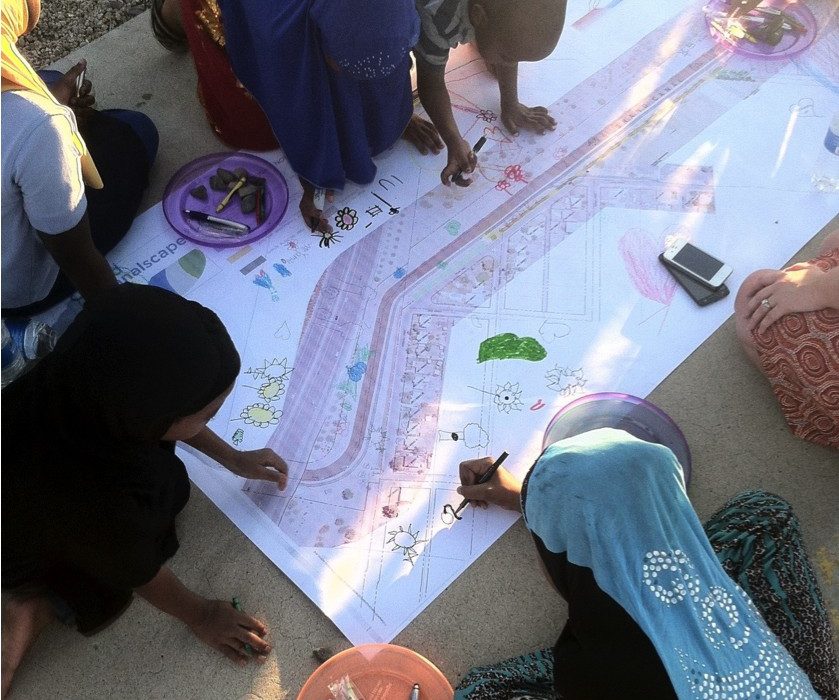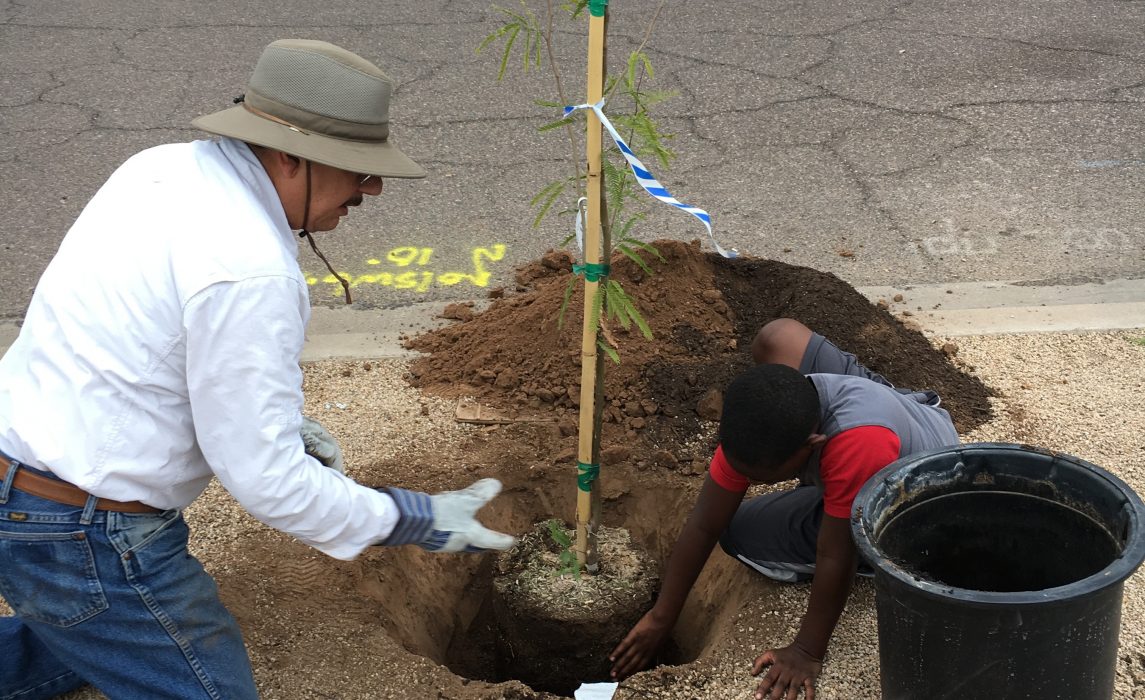Reducing Extreme Heat in Phoenix
The Problem
During the summer months, Phoenix can reach temperatures upward of 115 degrees. Low-income and homeless residents, many of whom live in neighborhoods with inadequate tree canopy and rely on public transportation, feel the effects of this heat most accurately and are at increased risk of heat stroke and related illnesses.
The Solution
The city’s Resilience AmeriCorps program, called Resilient PHX, included initiatives to prepare residents for extreme heat and increase the city’s tree canopy of the city.
- Resilience AmeriCorps VISTA members recruited residents to help plant trees in a low-income neighborhood with few trees, which helped reduce heat.
- Resilience AmeriCorps VISTA members created a guide for volunteers with instructions on planting on caring for shade trees.
- Resilience AmeriCorps VISTA members coordinated Community Resilience Workshops for residents and community groups about emergency preparedness and the risks of flooding and extreme heat, so they could in turn educate other citizens.
- Through the We’re Cool program, Resilience AmeriCorps VISTA members organized volunteers, including Boy Scout troops and members of local churches, to hand out water and information at transportation hubs and other locations, and raise awareness about city cooling centers and other resources.
- The city also created a mini-grant program to fund neighborhood projects to increase green areas and revitalize low income neighborhoods. Those who participated in the resilience workshops were eligible for the mini-grants.
The Results
Resilient PHX engaged more than 250 volunteers and nearly 90 organizations to increase resilience in the city.
- Volunteers distributed thousands of maps of available cooling stations, and nearly 50 percent of transit riders recognized the map by the end of the We’re Cool program.
- Residents planted 30 trees in the Triangle Neighborhood, which had few trees, and used what they learned to create a Volunteer Tree Planting Guide for residents to use.
- In the Central Park Neighborhood, low-income neighborhood with less than 2 percent tree coverage, community leaders went door to door to connect with their neighbors and engaged 30 volunteers to plant 35 trees with additional funds from partner organizations. They are planning additional activities to improve their neighborhood.
- More than 200 people were trained in resilience workshops where they were educated in topics like about how best to respond to extreme heat and flooding, fire safety, and how to access city services.
- The city is on its way to achieving its goal of a 25% tree canopy by 2030.
Keys to Success
By focusing on a clear and actionable public problem that was important to residents–extreme heat–Phoenix was able to get buy-in from residents and city staff to make the project successful and sustainable. The Cities of Service Resilience AmeriCorps VISTA members also helped the city reach communities by bringing information to them in their communities and in public spaces like bus stops. The Department of Public Transportation and MetroValley Light Rail donated in-kind advertising space to increase awareness of city resources, and the Office of Emergency Management will continue the program.
“If the city is connected to the community members, it will understand the issue firsthand, instead of just assuming what the problem is. If the community is constantly communicating with the city management, we can find solutions faster.”
— Muktar Sheikh, Phoenix resident and volunteer Resilient PHX


